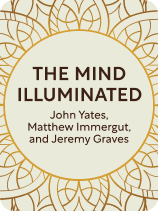

This article is an excerpt from the Shortform book guide to "The Mind Illuminated" by Culadasa, Matthew Immergut, and Jeremy Graves. Shortform has the world's best summaries and analyses of books you should be reading.
Like this article? Sign up for a free trial here.
Have you been stressed out and burdened by anxiety recently? What’s the key to meditating effectively?
Meditation is one of the best ways to reach a peaceful state of mind. In The Mind Illuminated, you can learn how to meditate effectively by embarking on a stress-free journey that anyone can take.
If you want to master the art of meditation, keep reading.
How to Meditate
The authors insist that anyone can learn how to meditate effectively and achieve enlightenment. Doing so doesn’t require any special skills or background knowledge; it only requires perseverance.
(Shortform note: By emphasizing perseverance, the authors imply that you need a growth mindset to meditate successfully. As Carol Dweck explains in Mindset, a growth mindset is believing you can improve your skills through effort. By contrast, a fixed mindset is believing you’re born with innate, unchangeable abilities (such as an inability to meditate). If you have a fixed mindset, you can replace it with a growth mindset. A strategy Dweck recommends is paying attention to the growth mindset and effort of successful people. For instance, talk to an expert meditator about their meditation journey and note how effort and a growth mindset contributed to their success. This may compel you to apply a growth mindset to meditation.)
In TMI, the authors organize the journey from novice meditator to enlightened meditator into 10 sequential stages. For simplicity, we’ve grouped these stages into four phases. In Phase 1, you’ll focus on building a meditation routine. In Phases 2 and 3, you’ll cultivate strong concentration and mindfulness, respectively. Finally, in Phase 4, you’ll achieve enlightenment.
Phase 1: Build a Meditation Routine
According to the authors, a consistent, regular routine is essential for successful meditation. Meditation is a skill that requires regular practice, like playing basketball: If you don’t establish a daily practice, you might not advance past its early phases.
Phase 2: Achieve Strong Concentration
Once you’ve established a meditation routine that you regularly follow, it’s time to improve your meditation skills. In this second phase, you’ll work on achieving strong concentration—and to do so, you must overcome the habit of daydreaming (what the authors call “mind-wandering”). Daydreaming is when something in your background awareness captures your attention, causing you to lose concentration on your breath. For instance, the sound of a distant lawn mower might remind you that you need to mow your lawn, which might remind you of all your other chores—and before you know it, you’ve forgotten your breath.
During this phase, aim to minimize daydreaming so it never lasts more than several seconds per meditation session. (Shortform note: If you can limit your daydreaming duration to several seconds per 15- to 45-minute session, you’ll arguably be significantly less prone to daydreaming than the average person—at least while you’re meditating. One study found that people spend nearly half of their waking hours daydreaming.)
Phase 3: Achieve Strong Mindfulness
Strong concentration is half of mindfulness—the other half is strong background awareness. In this phase, you’ll strengthen your background awareness while still maintaining strong concentration on your breath.
According to the authors, your background awareness is strong when you can continuously and neutrally observe your mind (an ability the authors call “metacognitive introspective awareness”). This involves keeping track of your thoughts, your emotions, and your perceptions of and reactions to external stimuli. We’ll call this process mind-watching.
Mind-watching develops your ability to maintain some distance from your thoughts and emotions. This allows you to be more objective so you can respond to situations intentionally rather than rashly or emotionally. Recall our earlier example of mindfully listening to your child tell you a story from her school day: Strong background awareness made you objectively aware of and distant from your frustration, preventing you from snapping at your child. All the while, you continued listening to your focal point (your child’s story)—the result of strong concentration. You then responded to your daughter intentionally.
To practice mind-watching through meditation, constantly monitor your thoughts, feelings, and reactions to stimuli while still maintaining concentration on your breath. This is like the aforementioned strategy of categorizing, except you categorize constantly instead of only in response to distractions. This keeps you in “analysis” mode rather than “feeling” mode, ensuring that you keep some objective distance from your thoughts and emotions.
For example, say you’re meditating and you notice the cool temperature of the air in your nose (a result of strong concentration). You observe the effect this has on your mind: It makes you feel calm. Then, you hear a sound in the distance (external stimuli), and you notice its effect on you—it prompts a strong visualization of your childhood home. You categorize this thought as a memory, then you categorize the effect this memory has on your emotions: It makes you feel happy. You’re not probing deeper into these thoughts and feelings by asking why the air makes you calm, wondering what produced the sound, or thinking more about your childhood. You’re simply noticing and categorizing.
Phase 4: Achieve Enlightenment
Once you’ve achieved strong mindfulness, you’ve built the foundation for achieving enlightenment. As discussed, experiencing the five realizations is crucial to experiencing enlightenment. The authors say that you’ll eventually do so as you continue practicing mindfulness. Recall that realizations reveal the truth of reality—since mindfulness is about observing what’s really happening in the present, it primes the mind to experience these realizations.
The authors elaborate that you can’t consciously bring about these realizations, but strong mindfulness makes them more likely to occur. For instance, closely following your breath or watching your mind may lead you to realize that every sensation and emotion is constantly changing. This may prompt the realization of impermanence.
(Shortform note: The idea that you can’t consciously bring about realizations may make meditation feel challenging: Perhaps you’ll feel impatient to experience these realizations. It may help to recall the authors’ earlier assertion that strong concentration and mindfulness are themselves beneficial. Therefore, you can enjoy the journey to enlightenment—even if it’s long. Remember that strong concentration strengthens your ability to be in the present, and strong mindfulness allows you to behave intentionally. One meditator who documented their journey implementing the advice in TMI corroborates some of these benefits: They say that practicing strong concentration made their daily life beyond meditation feel noticeably more peaceful.)

———End of Preview———
Like what you just read? Read the rest of the world's best book summary and analysis of Culadasa, Matthew Immergut, and Jeremy Graves's "The Mind Illuminated" at Shortform.
Here's what you'll find in our full The Mind Illuminated summary:
- That the true goal of meditation is to reach enlightenment
- The 10 sequential stages you can follow to improve your meditation practice
- Cultural, historical, and scientific insights about meditation






